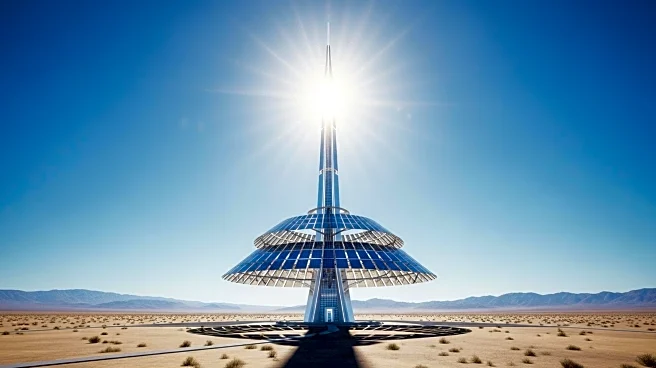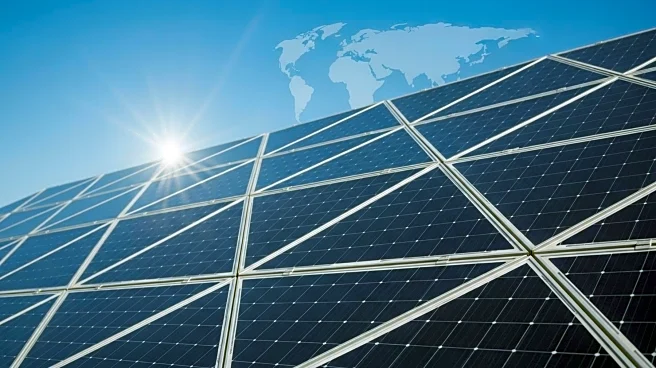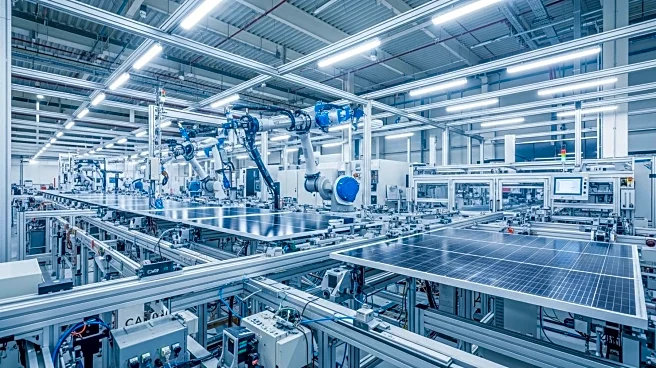What's Happening?
A comprehensive report by IMARC Group outlines the setup requirements and market dynamics for establishing a solar post lights manufacturing plant by 2025. The report details the necessary steps for setting up such a facility, including market analysis, product manufacturing processes, and project economics. It highlights the investment needed, which ranges from USD 1.5 million to USD 5 million for a medium-scale plant, covering costs for land acquisition, machinery, and infrastructure. The report also emphasizes the importance of vertical integration and R&D to enhance efficiency and quality control. The solar post lights market is driven by the global shift towards sustainable energy and smart city infrastructure, supported by government subsidies and favorable regulations.
Why It's Important?
The establishment of solar post lights manufacturing plants is crucial in advancing sustainable energy solutions and supporting smart city initiatives. As urbanization increases, the demand for eco-friendly lighting solutions grows, offering significant opportunities for manufacturers. The declining costs of photovoltaic panels and energy storage systems make solar post lights more cost-effective, encouraging widespread adoption. This development not only contributes to environmental protection by reducing carbon footprints but also stimulates economic growth through job creation and technological innovation. Manufacturers stand to benefit from government incentives and the growing market demand, positioning themselves as key players in the renewable energy sector.
What's Next?
Manufacturers are expected to focus on enhancing production efficiency through technological advancements in solar cells and automation. Partnerships with real estate developers and municipalities will be crucial in ensuring steady demand. The report suggests adopting lean manufacturing and smart automation strategies to improve profitability and scalability. As the market for solar post lights expands, companies will likely invest in R&D to develop higher-efficiency solar modules and durable designs for outdoor applications. The ongoing support from governments worldwide through subsidies and favorable policies will continue to drive the growth of this industry.
Beyond the Headlines
The shift towards solar-powered lighting systems reflects broader societal changes towards sustainability and environmental consciousness. This trend may lead to increased public awareness and demand for other renewable energy solutions, potentially influencing policy decisions and urban planning. The integration of solar post lights in smart city infrastructure could pave the way for more innovative applications of solar technology, fostering a culture of sustainability and technological advancement.











